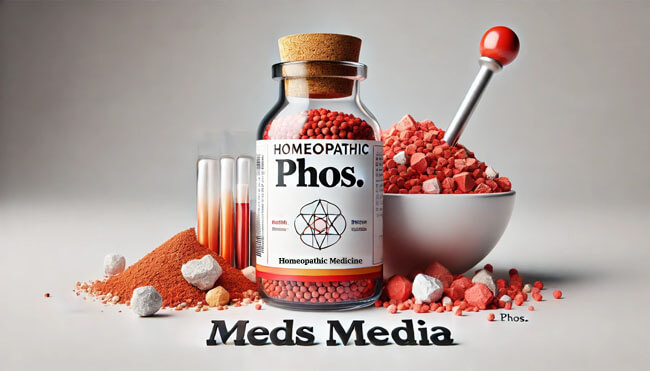
Properties and Preparation:
Aconite Napellus, commonly known as Aconite or Monkshood, is a highly toxic plant used in homeopathy. The plant belongs to the Ranunculaceae family and is native to Europe and Asia. In homeopathy, Aconite is prepared through a process of potentization, which involves serial dilution and succussion to create different potencies.
Symptoms & Materia Medica:
Aconite (Aconite Napellus) is characterized by a state of fear, anxiety, and anguish of both mind and body. The most prominent manifestation of Aconite is physical and mental restlessness, often accompanied by sudden and acute symptoms, especially fever. Aconite patients typically prefer not to be touched and experience a sudden and profound loss of strength.
This remedy is indicated for complaints resulting from exposure to various weather conditions, such as dry, cold weather, draughts of cold air, or extreme heat, particularly affecting the gastrointestinal system. It is the go-to remedy for inflammations and inflammatory fevers. Notably, Aconite profoundly affects serous membranes and muscular tissues, causing burning sensations, tingling, coldness, and numbness. It can also be beneficial in cases of influenza.
The remedy has a marked impact on arterial tension, with both emotional and physical tension contributing to many of the symptoms. When prescribing Aconite, it is essential to remember that it induces only functional disturbance and does not produce tissue changes. Its effects are brief and lack periodicity.
Aconite’s sphere of action lies at the onset of acute diseases and should not be continued after pathological changes have occurred. In cases of hyperemia and congestion, Aconite is best used before exudation sets in, particularly during influenza.
Aconite Napellus is indicated for a range of symptoms related to anxiety, fright, physical and mental restlessness, and nervous excitement. The complaints typically arise suddenly, often triggered by shock or fright. The patient may harbor various fears, such as fear of death, darkness, bed, ghosts, or being in crowds. Interestingly, they might even predict the date and time of their death. Aconite individuals are highly restless and perform tasks hurriedly. Mental anxiety, tension, worry, and fear often accompany even minor ailments. As a wonderful nerve tonic, Aconite is also useful as a shock absorbent.
Moreover, Aconite Napellus is effective in treating colds and flu that result from exposure to dry, cold weather, draughts of cold air, and checked perspiration. It remains the first remedy for inflammations and inflammatory fevers. The remedy addresses arterial tension and emotional and physical mental tension, which underlie many of the symptoms. When prescribing Aconite, it is crucial to bear in mind that its action is limited to functional disturbances, and there is no evidence of it causing tissue changes. It acts briefly and lacks periodicity. Its therapeutic sphere lies at the beginning of acute diseases and should not be continued once pathological changes have set in.
Additionally, Aconite Napellus is valuable in countering the ill effects of checked perspiration, fear, fright, exposure to the heat of the sun, shock, and excitement. It proves particularly beneficial during sudden fever attacks, where the temperature rises sharply without any periodic pattern. The patient may experience alternating red and pale face during fever, along with a strong thirst for large quantities of cold water. Aconite is also well-suited to address sudden inflammatory conditions in any part of the body.
Mind:
The mental state of individuals requiring Aconite is marked by an overwhelming sense of fear, anxiety, and worry, which accompanies even the most minor ailments. Delirium may manifest with feelings of unhappiness, worry, fear, and occasionally raving, though unconsciousness is rare. Aconite patients harbor forebodings and fears, particularly of death, strongly believing that their end is imminent and even predicting the day.
They fear the future, crowds, crossing the street, and experience restlessness with tossing about. The imagination is highly acute, sometimes even clairvoyant. The intensity of their pains is intolerable, driving them to a state of frenzy. Music becomes unbearable, inducing sadness, especially in cases where Ambra is indicated. Curiously, they believe that their thoughts originate from their stomach, and they may feel certain parts of their body are abnormally thick. There is a peculiar sensation as if what had just been done was merely a dream.
Aconite patients are gripped by a deep-rooted fear of death, often convinced that their demise is imminent, and they may even predict the exact time of their passing. Fear of death is particularly heightened during pregnancy and labor. Their fears extend to various situations and objects, including crowds, narrow spaces, open spaces, darkness, elevators, tunnels, heart disease, heart stopping, brainstroke, fainting, air travel, and earthquakes.
This fearful mental state is accompanied by restlessness, which is intense and agitating. In panic states, Aconite individuals experience sudden and violent feelings, akin to an internal earthquake. Palpitations, a red face, vertigo, one-sided numbness, faintness, perspiration, trembling, and dyspnea are common manifestations during these panicky episodes.
Head:
Aconite presents with a multitude of sensations, including fullness, heaviness, pulsating, heat, bursting, and a burning undulating feeling. There may be a sense of intercranial pressure reminiscent of Hedera Helix. The headache is described as a burning sensation, as if the brain were being moved by boiling water, much like the effects observed with Indigo.
Vertigo is worsened upon rising or shaking the head and may be accompanied by a peculiar sensation on the vertex, as if the hair were being pulled or stood on end. Nocturnal furious delirium can also occur.
The headaches experienced by those requiring Aconite can be tormenting, with aggravation in the occiput and forehead regions. These headaches intensify after fright or exposure to cold, and there is a notable fear of death associated with them.
Additionally, congestion and fullness in the head worsen in the evening and may feel as if the head is enlarged. During episodes of panic, the sensation of boiling inside the head may be particularly distressing. Furthermore, the act of rising or attempting to sit up in bed can trigger these head symptoms.
Eyes:
The eyes in Aconite patients exhibit signs of redness and inflammation. They feel dry and hot, as if there is sand present, leading to discomfort. Swelling of the eyelids is observed, which become hard and red. There is an aversion to light, causing sensitivity to bright surroundings. Additionally, after exposure to dry, cold winds or reflection from snow, the eyes may excessively water. In cases where cinders or foreign bodies are extracted from the eyes, profuse watering may also occur.
Moreover, Aconite can be beneficial for addressing intra-ocular hemorrhage, especially when aggravated by trauma. Arnica and Hamamelis are other remedies to consider in such cases.
Ears:
Individuals requiring Aconite may experience heightened sensitivity to noises, making music unbearable for them. Their external ear can become hot, red, painful, and swollen. Earache, similar to that seen in Chamomilla, may be present. Additionally, they may perceive a sensation as if a drop of water is inside the left ear. The external ear remains hot and red, and any sensitivity to noise becomes painful and intolerable.
Nose:
The nose in Aconite patients exhibits heightened sensitivity to smells. Pain at the root of the nose may also be experienced. During a cold, they suffer from excessive sneezing and throbbing sensations in the nostrils. Bright red blood may be present in cases of nosebleeds. The mucous membrane becomes dry, leading to a blocked nose, which can be dry or have scanty watery discharge.
Moreover, Aconite individuals may develop conjunctivitis due to exposure to cold, dry winds, or reflection from snow. Inflammations can arise from injuries, similar to the effects of Symphytum. The eyes may be hot and dry, and the conjunctiva of the eyelids becomes red. There is profuse tearing of the eyes, and the eyelids feel hard and swollen. A strong sensitivity to sunlight, or photophobia, may be evident. The eyeballs may feel enlarged, and in some cases, loss of vision can occur after experiencing fright or exposure to very cold or hot weather.
Face:
The facial symptoms observed in Aconite cases include a red, hot, flushed, and swollen appearance. Notably, one cheek may appear red while the other remains pale, similar to the presentation seen in Chamomilla and Ipecacuanha. Upon rising, the redness of the face may suddenly turn deathly pale, and this may be accompanied by nosebleeds (epistaxis) or dizziness.
Tingling sensations and numbness can be felt in the cheeks, and neuralgia, particularly affecting the left side, may be present. Restlessness, tingling, and numbness are common features of this facial neuralgia. Furthermore, there may be pain in the jaws.
Aconite individuals may also exhibit an acute sensitivity to unpleasant odors, perceiving them with heightened intensity.
Mouth:
Symptoms such as numbness, dryness, and tingling sensations. The tongue may become swollen, with tingling specifically felt at the tip. The teeth become sensitive to cold temperatures, and there may be a constant habit of moving the lower jaw as if chewing something. The gums appear hot and inflamed, and the tongue may develop a white coating, similar to the effects seen with Antimonium crudum.
Numbness and tingling not only in the tongue but also in the lips. The oral discomfort includes a burning sensation. Interestingly, everything tastes bitter to the Aconite patient, except for water.
Teeth:
Dental issues, including teeth grinding or clenching. Moreover, dental pain, which can be triggered by exposure to dry, cold winds, and may also be experienced during pregnancy.
Throat:
In cases where Aconite is indicated, the throat may exhibit various symptoms, including redness, dryness, constriction, numbness, prickling, burning, and stinging sensations. Swelling of the tonsils may also occur, and they may appear dry. Aconite is particularly beneficial in addressing acute inflammations of the throat that present with high fever, a dark red appearance, and a sensation of burning and stinging. Furthermore, swallowing can become difficult and uncomfortable for the individual experiencing these throat symptoms.
Stomach:
Aconite’s impact on the stomach is evident through a range of symptoms, including vomiting accompanied by fear, heat, profuse sweating, and increased urination. There is an intense thirst, particularly for cold water, as everything else tastes bitter except water. The thirst is so extreme that the individual may drink, vomit, and even express fears of dying.
The vomit can be bilious, mucous, and sometimes bloody or greenish in appearance. Moreover, a sense of pressure in the stomach may lead to dyspnea. Aconite can cause hemic vomiting, known as hćmatemesis, wherein blood is present in the vomit. The burning sensation extends from the stomach to the esophagus, and in cases of gastritis resulting from drinking cold water when overheated, Aconite may be indicated.
The thirst experienced by the individual is for large quantities of cold water, and they may also feel a burning pain that extends to the mouth. The sensation of pressure, akin to that of a stone, can be felt in the stomach, and it may extend to the back.
Abdomen:
Symptoms such as heat, tension, and tympanitic (distended with gas) sensations. The abdominal area becomes sensitive to touch, and colic pain is experienced, with no position providing relief. However, the abdominal symptoms may improve after consuming warm soup. A burning sensation is felt in the umbilical region.
In certain cases, Aconite can be beneficial in addressing acute hepatitis and splenitis, which is inflammation of the spleen. Severe colic may be present, accompanied by green, watery stool, and the pain may ease after a bowel movement.
Furthermore, the abdomen may appear swollen and tympanitic, giving a bloated and drum-like sensation. The swelling feels hot and is painful to touch, with aggravation of discomfort in the umbilical region.
Rectum:
Individuals may experience pain along with nightly itching and stitching sensations in the anus. The stool may be frequent and small, accompanied by tenesmus, a feeling of incomplete evacuation, and it may appear green, resembling chopped herbs. Moreover, there may be a peculiar condition where the stool is white, accompanied by red urine. Aconite is known to be useful in cases of choleraic discharge, where there is collapse, anxiety, and restlessness. Bleeding hemorrhoids, which is a condition known as Hamamelis, can also be present.
Furthermore, Aconite can be beneficial in addressing watery diarrhea in children. Affected children tend to cry and complain extensively, experiencing sleeplessness and restlessness.
Urinary:
The urine may become scanty, appearing red and hot, with a painful sensation. Tenesmus and burning may be experienced at the neck of the bladder, as well as in the urethra. In certain cases, the urine may be suppressed and appear bloody. A notable anxiety arises consistently at the beginning of urination. Retention of urine can occur, and it may be accompanied by screaming, restlessness, and excessive handling of the genitals. The region of the kidneys becomes sensitive, and there may be instances of profuse urination, coupled with copious perspiration and diarrhea.
Moreover, Aconite is useful in cases of urine retention in newborns, which may result from fright, or due to exposure to cold, especially in children, leading to crying and restlessness. Additionally, during crisis situations, frequent urination may be observed.
Male:
In males, Aconite can manifest with specific symptoms related to the genital area. There may be sensations of crawling and stinging in the glans (the head of the penis). Additionally, the testicles may experience a bruised pain, and they may appear swollen and feel hard to the touch. Furthermore, the individual may suffer from frequent erections and emissions (ejaculations). Painful erections can also be a part of the picture.
Aconite is known to be beneficial in cases of acute orchitis, which is inflammation of the testicles. This condition can lead to significant discomfort and can be effectively addressed with the help of Aconite.
Female:
In females, Aconite can elicit specific symptoms related to the reproductive system. The vagina may become dry, hot, and sensitive, leading to discomfort. Menstrual periods can be excessively profuse, accompanied by nosebleeds and may be prolonged and delayed. Aconite can evoke a state of frenzy or intense agitation upon the onset of menses. In some cases, menstruation may become suppressed due to fright or exposure to cold, particularly in individuals with a plethoric (overfull) constitution.
Moreover, Aconite can address conditions where the ovaries are congested and painful, with sharp shooting pains in the womb. After childbirth, the individual may experience after-pains accompanied by fear and restlessness.
Furthermore, Aconite is indicated for cases of acute inflammation of the ovaries resulting from suppressed menstrual flow. It can also be beneficial in instances of suppressed menses and dysmenorrhea (painful menstruation) triggered by fright or chilling influences. Additionally, Aconite may be helpful in cases of abortion induced by fright.
Respiratory:
Aconite’s impact on the respiratory system is characterized by various symptoms. The individual may experience constant pressure in the left chest, and even slight movement can lead to a feeling of oppressed breathing. A hoarse, dry, and croupy cough is observed, accompanied by loud and labored breathing. In children, there may be a tendency to grasp at the throat with each cough. Sensitivity to inspired air is prominent, and shortness of breath may occur.
The larynx becomes sensitive, and stitches may be felt throughout the chest. The cough is dry, short, and hacking, worsening at night and after midnight. The lungs may have a hot sensation, and there can be an occurrence of blood coming up with hawking. Following a cough, the individual may experience tingling sensations in the chest.
Moreover, Aconite is useful in addressing hyperventilation with a croupy sound, which can be agonizing and leads to a fear of suffocation. Dyspnea, or breathlessness, may arise due to fright or cardiac excitement. Additionally, Aconite can be beneficial in cases of psychogenic dyspnea, as seen in the remedy Lobelia.
Chest:
Palpitations are experienced along with anxiety and an overwhelming fear of death, leading to restlessness. The chest may feel as if boiling water is coursing through it, and there might be a sensation as if the heart could explode.
Furthermore, Aconite is indicated in cases of angina, where there is intense pain spreading in various directions, particularly down the left arm, accompanied by numbness and tingling sensations. Respiratory conditions like pneumonia and pleurisy are also within the sphere of Aconite’s action.
Moreover, stitches may be felt on the right side of the chest, with aggravation while lying on the right side, during movement, coughing, and breathing. These symptoms are significant indications for the use of Aconite in addressing chest-related issues.
Heart:
Aconite has notable effects on the heart, leading to specific symptoms. Tachycardia, or a rapid heartbeat, may occur. Afflictions of the heart are often associated with pain experienced in the left shoulder. Aconite is recognized for its ability to address stitching pain in the chest, offering relief in such cases. Palpitations are common, accompanied by feelings of anxiety, which can lead to fainting episodes and tingling sensations in the fingers.
Furthermore, the pulse may be full, hard, and tense, exhibiting a bounding nature. There are instances when the pulse may even exhibit intermittent pauses. Interestingly, when the individual is in a sitting position, the temporal and carotid arteries can be palpably felt. These distinct symptoms illustrate Aconite’s relevance in managing heart-related issues and its capacity to alleviate associated discomfort.
Back:
The back may feel numb, stiff, and painful, with a crawling and tingling sensation, as if bruised. There can be stiffness experienced in the nape of the neck, leading to a sensation of bruised pain between the shoulder blades. These symptoms highlight Aconite’s relevance in addressing back-related issues and its potential to alleviate the associated sensations of discomfort and pain.
Extremities:
Numbness and tingling sensations may occur, along with shooting pains and a sense of icy coldness and insensitivity in the hands and feet. The arms may feel weak, bruised, heavy, and numb. Pain down the left arm is observed, and hot hands are contrasted with cold feet.
Inflammatory conditions, such as rheumatic inflammation of joints, worsen at night and are characterized by red, shiny swelling that is highly sensitive. The hip-joint and thigh may feel lame, particularly after lying down, and the knees may feel unsteady with a tendency for the foot to turn. There may be weakness and laxity in the ligaments of all joints, and the joints may crack without pain.
Moreover, bright red hypothenar eminences can be seen on both hands, and there may be a sensation as if drops of water are trickling down the thigh. Aconite is also beneficial in addressing acute rheumatism, which is accompanied by a feeling of enlargement of the affected area.
Sleep:
Aconite’s effects on sleep are characterized by distinct patterns and symptoms. Nightmares and nightly ravings may trouble the individual during rest. Anxious dreams and sleeplessness often accompany a sense of restlessness, leading to tossing about in bed (utilizing the thirtieth potency may be beneficial). The person may frequently startle or jerk awake during sleep. Long dreams may occur, with a prevailing sense of anxiety in the chest. Insomnia may be particularly experienced by the elderly.
Restlessness is a common theme in Aconite-related sleep disturbances, often accompanied by feelings of nervousness and anxiety. Interestingly, nightmares may replace panic attacks during sleep, indicating Aconite’s relevance in managing such sleep-related issues. Additionally, some individuals may find comfort in sleeping on their left side. These sleep-related symptoms highlight Aconite’s potential to address various sleep disturbances and provide relief from associated anxieties and restlessness during nighttime.
Skin:
The skin may appear red, hot, swollen, and dry, with a sensation of burning. Purpura miliaris and a rash resembling measles may be present. Additionally, gooseflesh may be observed, and there might be feelings of formication (like ants crawling) and numbness. Chilliness and formication down the back may also occur. Pruritus (itching) is relieved by stimulants.
In newborns, Aconite may be relevant in cases of jaundice. The skin tends to be dry, and red rashes are aggravated by exposure to sunlight and heat. Fine prickings, akin to needle pricks, and tingling sensations may also be experienced. These skin-related symptoms highlight Aconite’s potential to address various skin conditions and alleviate associated discomfort and sensations.
Fever:
Aconite is characterized by a high fever, with the cold stage being particularly pronounced. The person experiences cold sweat and icy coldness on the face, while cold and heat alternate throughout the fever. Evening chilliness is often felt soon after getting into bed. Cold waves seem to pass through the individual, causing a constant sensation of chilliness. Thirst and restlessness are consistently present during the fever, and the person feels chilly if left uncovered or touched. As the fever progresses, dry heat and a red face become apparent.
Aconite proves to be a valuable febrifuge, especially when mental anguish and restlessness accompany the fever. Sweating is profuse, particularly in the areas of the body that are in contact with the surface one lies on, and this sweating provides relief from the symptoms experienced during the fever. Overall, Aconite’s characteristics make it a relevant remedy in cases of high fever with accompanying mental distress and restlessness.
Modalities:
The individual experiences improvement in open-air environments, finding relief and comfort when exposed to fresh surroundings. However, the symptoms worsen in warm rooms, especially during the evening and night. Lying on the affected side exacerbates the condition further. Exposure to music and tobacco smoke also proves to be aggravating factors. Additionally, the person’s symptoms are negatively impacted by dry and cold winds. It is worth noting that vinegar, when administered in large doses, acts as an antidote to counteract the poisonous effects of Aconite. Being aware of these modalities and the potential antidote can aid in managing Aconite-related conditions effectively.
Generalities:
There is an extreme excitability of both the nervous and vascular systems. The individual strongly desires to be in the open air, as it brings a sense of relief and well-being. However, certain conditions aggravate the symptoms, such as cold and dry weather, especially when accompanied by dry, cold winds or an east wind. Interestingly, becoming cold when overheated also worsens the condition. Motion, lying on the affected side, and touch, especially during fever, are factors that intensify the discomfort.
Psychologically, experiences of fright, shock, or a feeling of imminent death aggravate the individual’s state. Dusk or twilight can also exacerbate symptoms. On the other hand, certain discharges like vomiting and diarrhea bring some relief. The person may also experience plethoric or excessive local congestions.
Furthermore, there may be episodes of epilepsy or convulsions associated with Aconite. Numbness and tingling are more pronounced on the left side of the body. The pains caused by the condition are intolerable, often characterized by a stinging, burning sensation. The affected person may instinctively protect the painful part by holding or touching it with their hands. These generalities provide valuable insights into Aconite’s impact on the body and mind, guiding appropriate treatment approaches.
Relationship:
Aconite Napellus has specific relationships with other substances. Its action can be modified by the intake of acids, wine, coffee, lemonade, and acid fruits.
It is not suitable for treating malarial and low fevers, hectic and pyemic conditions, or inflammations that have localized in specific areas. Often, Sulphur follows Aconite in treatment. When dealing with intense pain and sleeplessness, Aconite can be compared with Chamomilla and Coffea.
Another remedy, Agrostis, exhibits similar effects to Aconite in cases of fever and inflammations, as does Spiranthes. Understanding these relationships is essential in determining the most appropriate remedies and combinations for specific conditions.
Complementary:
Coffea and Sulphur are complementary remedies to Aconite Napellus. Sulphur can be viewed as a chronic version of Aconite and is often used to complete a cure that was initiated with Aconite. Understanding the complementary relationship between these remedies allows for a more comprehensive and effective approach to treatment in certain cases.
Compare:
Bellad; Cham; Coffea; Ferr, phos.
Remedies that follows well:
Abrot., Arn., Ars., Bell., Bry., Cact., Calc., Canth., Cocc., Coff., Hep., Ip., Kali-br., Merc., Puls., Rhus-t., Sep., Spig., Spong., Sulph., Sil.
Antidotes:
Acet-ac., Bell., Berb., Coff., Nux-v., Par., Sulph., Vinum., Wine.
Inimical: Nil
FAQ about Aconite in Homeopathy:
Q: What is Aconite used for in homeopathy?
A: Aconite is primarily used for acute conditions characterized by sudden onset, intense fear, anxiety, and restlessness. It is commonly prescribed for colds, flu, fevers, inflammations, and panic attacks.
Q: How does Aconite work in homeopathy?
A: Aconite act on the nervous and vascular systems, producing profound effects on the mind and body. It is thought to balance the vital force and stimulate the body’s self-healing abilities.
Q: Is Aconite safe to use in homeopathy?
A: When prepared according to homeopathic principles, Aconite is safe to use. However, it should always be taken under the guidance of a qualified homeopathic practitioner to ensure appropriate dosage and potency.
Q: Can Aconite be used for chronic conditions?
A: Aconite is mainly indicated for acute conditions, and it is not typically used for chronic ailments. Other remedies are more suitable for long-standing health issues.
Q: What are the common potencies of Aconite?
A: Aconite is available in various potencies, such as 6C, 30C, 200C, and 1M. The choice of potency depends on the individual’s symptoms and the severity of the condition.
Q: How should Aconite be taken?
A: Aconite is usually taken in the form of small pills or liquid dilutions. The recommended dosage and frequency will vary depending on the individual’s condition and the practitioner’s advice.
Q: Can Aconite be used for children and pets?
A: Yes, Aconite can be used for both children and animals in homeopathy. However, it is crucial to consult a homeopathic veterinarian for pets and a qualified homeopath for children to ensure safe and effective treatment.
Q: Are there any side effects of Aconite in homeopathy?
A: When used correctly, Aconite does not cause any side effects. However, homeopathic aggravations may occur in some cases, which are usually mild and transient.
Q: Can Aconite be taken with conventional medications?
A: Homeopathic remedies can be taken alongside conventional medications. However, it is essential to inform your healthcare provider about all the treatments you are using to avoid potential interactions.
Q: Is Aconite suitable for everyone?
A: Aconite is not suitable for everyone and should be chosen based on the individual’s specific symptoms and constitution. It is essential to consult a homeopathic professional for personalized recommendations.
Books References on Aconite in Homeopathy:
- Materia Medica and Repertory” by William Boericke
- The Prescriber” by John Henry Clarke
- Homeopathic Medicine at Home” by Maesimund B. Panos and Jane Heimlich
- A Homeopathic Approach to Medicine” by Dr. Pravin Jain
- Keynotes and Characteristics with Comparisons of Some of the Leading Remedies” by H.C. Allen
These books provide valuable insights into the properties, uses, and applications of Aconite in homeopathy and are excellent resources for homeopathic practitioners and enthusiasts alike.
Please note that the information provided here is for informational purposes only and should not replace professional medical advice. It is always recommended to consult qualified homeopathic doctors for proper diagnosis, guidance on the use of Aconite Napellus and individualized effective homeopathy treatment.
* Related Homeopathic Medicine *
VERATRUM ALBUM
STRAMONIUM
ARSENICUM ALBUM
NATRUM SULPHURICUM
Similar Posts
Zincum Picricum Homeopathic Medicine & Personality | Uses, Benefits & Indications
Zincum Phosphoricum Homeopathic Medicine & Personality | Uses, Benefits & Indications
Zincum Iodatum Homeopathic Medicine & Personality | Uses, Benefits & Indications
Zincum Bromatum Homeopathic Medicine & Personality | Uses, Benefits & Indications
Zea Homeopathic Medicine & Personality | Uses, Benefits & Indications
Zincum Aceticum Homeopathic Medicine & Personality | Uses, Benefits & Indications
Zincum Cyanatum Homeopathic Medicine & Personality | Uses, Benefits & Indications
Zincum Muriaticum Homeopathic Medicine & Personality | Uses, Benefits & Indications
Zincum Oxydatum Homeopathic Medicine & Personality | Uses, Benefits & Indications
Zincum Sulphuricum Homeopathic Medicine & Personality | Uses, Benefits & Indications

Phosphorus Homeopathic Medicine & Personality | Uses, Benefits & Indications
Causticum Homeopathic Medicine & Personality | Uses, Benefits & Indications

Top Global Homeopathic Medicine Manufacturers

Top renowned Homeopathic research institutes worldwide


